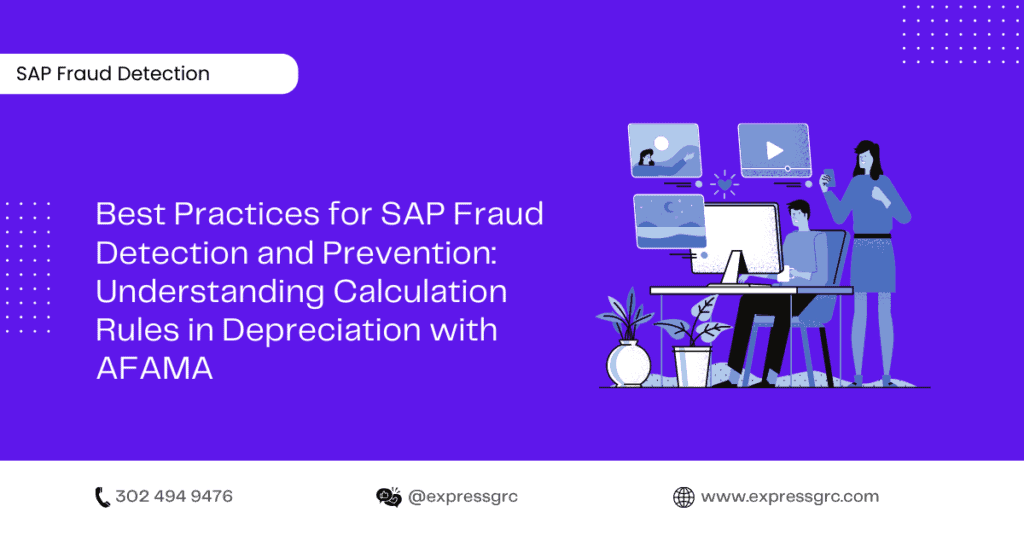Introduction:
In the digital age, where businesses rely heavily on technology for financial management, SAP has emerged as a leading ERP system. SAP provides comprehensive financial modules that include asset management. However, with the increasing complexities of financial transactions, the risk of fraud has also escalated. In this article, we will delve into the best practices for SAP fraud detection and prevention, with a specific focus on understanding the calculation rules in depreciation using AFAMA.
What is SAP Fraud Detection?
Before we dive into the specifics of calculation rules, let’s briefly explore SAP fraud detection. SAP’s advanced fraud detection functionality helps organizations identify potential fraud risks and patterns within their financial processes. By analyzing vast amounts of transactional data, SAP fraud detection tools can flag suspicious activities, reducing the risk of financial losses.

Understanding AFAMA in SAP:
AFAMA is a critical transaction code in SAP used for managing asset depreciation. It allows businesses to configure various calculation rules that determine how depreciation expenses are allocated over the useful life of an asset. Properly configuring AFAMA is essential for accurate financial reporting and effective fraud detection.
Calculation Rules in Depreciation:
- Straight-Line Method: The straight-line method is one of the most common depreciation techniques. It spreads the depreciable value of an asset evenly over its useful life. This method is straightforward and easy to implement, making it less prone to errors and manipulation.
- Declining Balance Method: The declining balance method applies a fixed depreciation rate to the asset’s net book value each year. While this method results in higher depreciation expenses initially, it is particularly useful for assets that have higher maintenance costs in later years.
- Units of Production Method: The units of production method ties the asset’s depreciation to its usage. It calculates depreciation based on the number of units the asset produces or the hours it operates. This method is suitable for assets where productivity directly correlates with usage.
- Sum-of-the-Years’ Digits Method: The sum-of-the-years’ digits method accelerates depreciation by dividing the asset’s remaining useful life by the sum of the digits for the asset’s useful life. It front-loads the depreciation expenses, making it effective for assets that quickly lose value over time.
Tips for Enhancing SAP Fraud Detection Using AFAMA:
- Regular Review of Depreciation Reports: Perform periodic reviews of depreciation reports to identify any anomalies or unexpected patterns. Unusual spikes in depreciation expenses could indicate fraudulent activities.
- Segregation of Duties: Ensure that the personnel responsible for configuring AFAMA and those handling asset management are different individuals. This segregation of duties reduces the risk of internal collusion.
- Implement Access Controls: Restrict access to the AFAMA transaction code and related authorization objects to only authorized personnel. This prevents unauthorized changes to the calculation rules.
FAQs:
Q1: Can I use multiple depreciation methods for different asset classes? A1: Yes, SAP allows you to define different depreciation methods for various asset classes based on their characteristics and usage.
Q2: How often should I conduct fraud risk assessments in SAP? A2: It is recommended to conduct fraud risk assessments at least annually or whenever significant changes occur within the organization.
Conclusion:
Proper configuration of calculation rules in depreciation using AFAMA is crucial for accurate financial reporting and fraud detection in SAP. By understanding the various depreciation methods and implementing best practices, businesses can minimize the risk of fraudulent activities and ensure the integrity of their financial data. Regular monitoring and review of depreciation reports, along with stringent access controls, will go a long way in safeguarding your organization against fraud.
As technology advances and financial processes become more intricate, staying vigilant and proactive in fraud detection is paramount for every modern business using SAP.
Remember, protecting your organization from fraud begins with understanding the tools at your disposal, and AFAMA is one of the key weapons in your arsenal.
